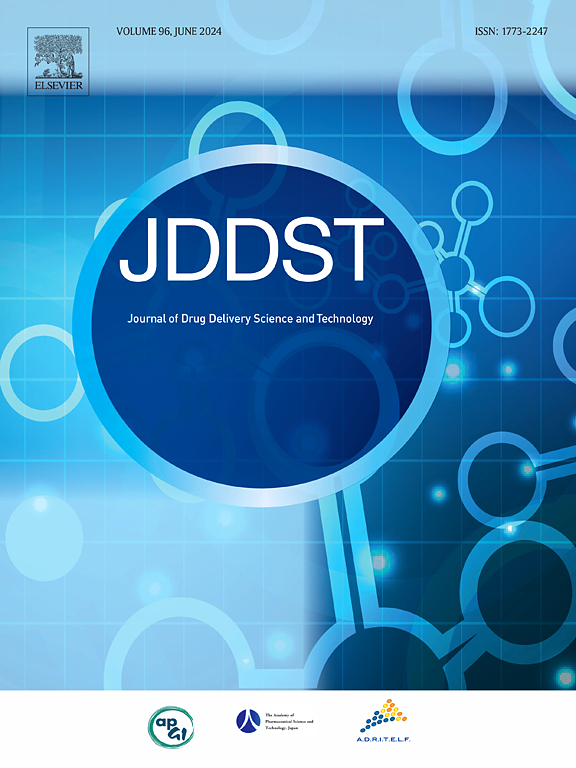Optimization of Linagliptin-loaded polymersomes via response surface methodology: A repurposed therapeutic strategy for hepatic encephalopathy prevention
IF 4.5
3区 医学
Q1 PHARMACOLOGY & PHARMACY
Journal of Drug Delivery Science and Technology
Pub Date : 2025-03-28
DOI:10.1016/j.jddst.2025.106855
引用次数: 0
Abstract
This study aims to prepare linagliptin-loaded polymersomes in order to enhance its stability, bioavailability, and to investigate its potential in the prophylaxis against hepatic encephalopathy (HE). Polymersomes were formulated using solvent injection technique and optimized using D-optimal design, where the effect of drug to polymer ratio (X1) and polymer type, whether Poly (D, L-lactic-co-glycolide) or polycaprolactone (X2) were studied. Fifteen formulae were prepared and evaluated for entrapment efficiency % (Y1), particle size (Y2), and zeta potential (Y3). The optimized formula was prepared using polycaprolactone polymer with a drug to polymer ratio of 1:8.9. The optimized formula showed an entrapment efficiency % of 73 ± 1.04 %, a particle size of 184.1 ± 1.45 nm, and a zeta potential of −21.2 ± 0.97 mV. In-vitro drug release showed remarkable sustained release profile for linagliptin-loaded polymersomes as compared to the standard linagliptin. In-vivo pharmacokinetic studies in rats showed a 262 % increase in bioavailability of linagliptin-loaded polymersomes. Moreover, linagliptin-loaded polymersomes showed promising results in a rat model of hepatic encephalopathy, with marked improvement in markers such as alanine transaminase (ALT), aspartate aminotransferase (AST), ammonia levels, and hippocampus brain-derived neurotrophic factor levels (BDNF). Our results showed that the optimized linagliptin-loaded polymersomes formula is a promising drug delivery system for enhancing linagliptin bioavailability, offering potential therapeutic benefits for managing HE and other diseases requiring sustained release and enhanced bioavailability.

求助全文
约1分钟内获得全文
求助全文
来源期刊
CiteScore
8.00
自引率
8.00%
发文量
879
审稿时长
94 days
期刊介绍:
The Journal of Drug Delivery Science and Technology is an international journal devoted to drug delivery and pharmaceutical technology. The journal covers all innovative aspects of all pharmaceutical dosage forms and the most advanced research on controlled release, bioavailability and drug absorption, nanomedicines, gene delivery, tissue engineering, etc. Hot topics, related to manufacturing processes and quality control, are also welcomed.

 求助内容:
求助内容: 应助结果提醒方式:
应助结果提醒方式:


